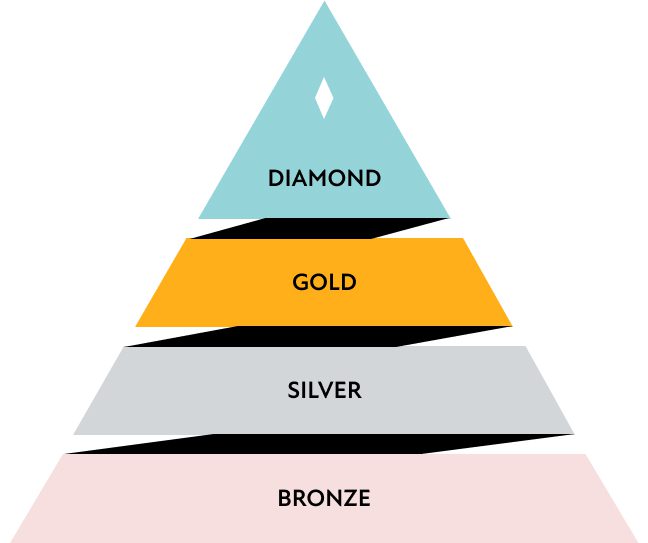
BLEND’s Quality Standards
Keep a finger on the pulse
The BLEND score card
Translator leveling system
Project allocation
allocation algorithm matches the most suitable talent to every project based on project characteristics, such as subject matter expertise and word count. We also prioritize highly ranked
translators, giving you a better chance of having your project done by the best of the best.
Ensuring quality with BLEND’s leveling system and language leaders (LL)
How does the leveling system work?
Our translators and localization specialists are constantly evaluated
and ranked according to 5 parameters:
Quality
Professional conduct
Translation volume
Response rate
On-time delivery

There are 4 levels in BLEND's leveling system:
Based on a translator’s ratings in these categories, their level is recalculated every 30 days and translators can move up, down, or stay at the same level. Translators are encouraged to work on meeting all parameters in order to gain higher rankings, as bigger projects are allocated to higher-level translators.


What is a Language Leader?
Our Language Leaders are top translators who we trust to perform extra quality reviews on your projects. They routinely review projects on an ongoing basis to make sure the rest of our translators are keeping up with industry standards. In addition, Language Leader (LL) review can be enabled by a client on any project to guarantee additional QA.
The LL score card
When scoring a project, our LL Reviewers use a standardized scorecard. The final review score is calculated based on this scorecard and on the total wordcount, the number of errors found, and the severity of these errors. The LL Scorecard is based in the industry standard LISA model. Our LLs review a translation for mistakes in the following categories:
- Typos
- Accuracy
- Grammar
- Style
- Following instructions
- Terminology
- Formatting
Each mistake is recorded, along with the severity rating of Minor, Major, or Critical. A weighted score is then calculated for each criteria, along with the number of words reviewed, to give a final percentage score out of 100%.
This percentage score is then converted to a score from 1 through 6. This conversion is more than a simple ratio-based conversion – it reflects BLEND’s high expectations from its translators. For example, to score a perfect 6 our translators are expected to reach 99.9% accuracy. For a score of 5, translators are expected to reach between 89.0% – 99.8% accuracy.


Maintaining quality standards with BLEND's Quality Index Report
Every month, we generate a report after having performed quality sampling on our most popular language pairs. The purpose of the BLEND Quality Index is to have an independent and objective indication of the quality our linguists produce. BLEND aims to continuously monitor itself in order to maintain a pool of the most skilled translators.
The process involves reviewing a random, statistically relevant sample of projects in all leading language pairs. The review is conducted by designated translators with outstanding credentials. Aside from the quality score of 1-6, which is measured using the same scorecard used in LL Reviews, comments and suggestions are also provided in order to create a feedback loop and help our quality improve.
